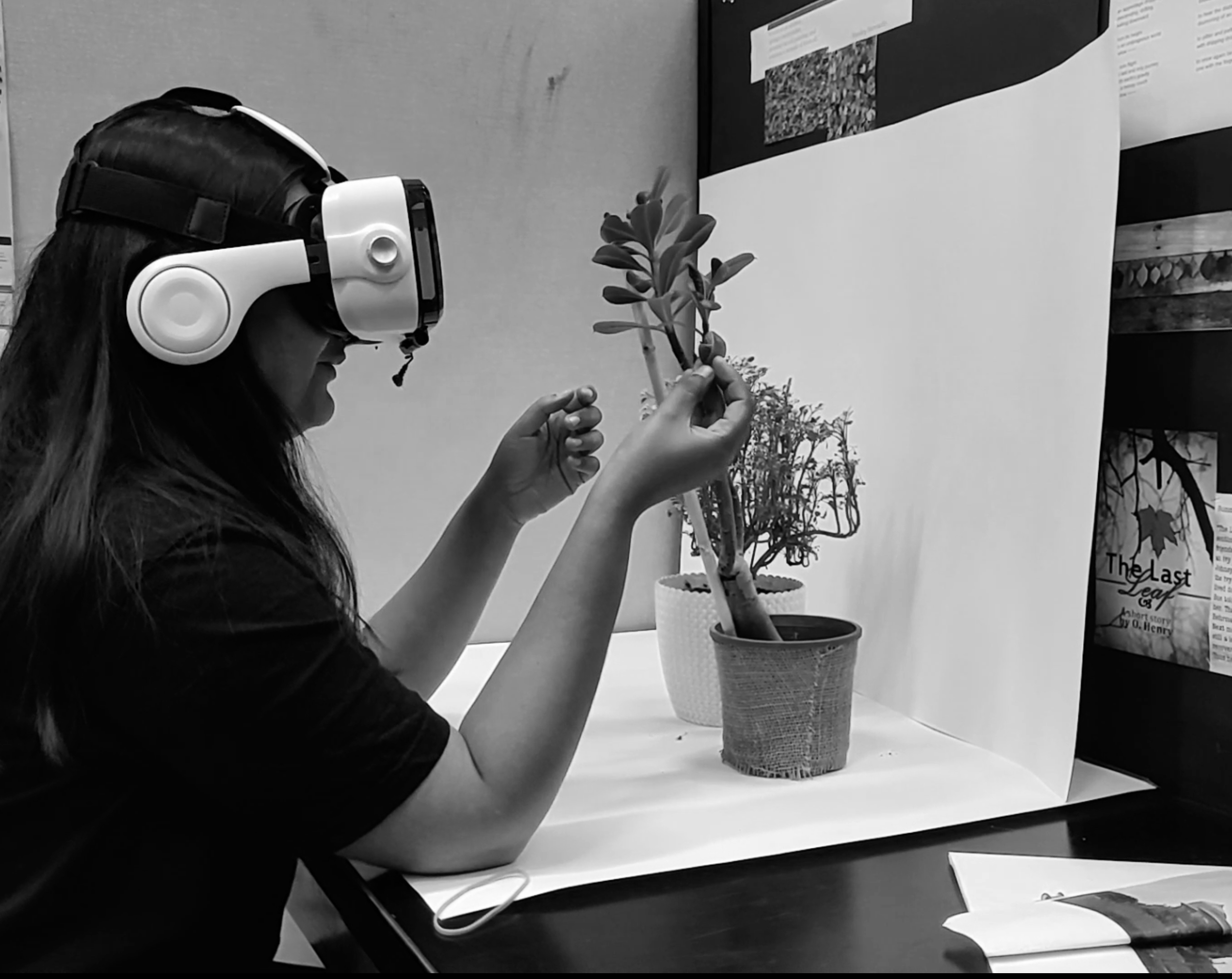Plantimate
Personality Augmentation for Fostering Empathy Towards Plants
Role: Lead Author, Prototyping & Software
Duration: 8 weeks (2020)
Accolades: Finalist, DIS Student Design Competition
Duration: 8 weeks (2020)
Accolades: Finalist, DIS Student Design Competition
Brief
Our interactions with the ecosystems around us have devolved largely to anthropocentric, transactional and utilitarian modalities. Non-Human life forms, particularly plants and ecology are perceived as resources rather than a legitimate entity imbibed with life. The project expounds on an ethical treatment of plants grounded in empathy. We establish this practice by creating anthropomorphic meaning around plants to generate compassion in participating human actors thereby employing it as a tool for conservation and meaningful co-existence.
Background
Humans value instantaneous response and recognize it to be a sign of life. Even though plants react to their surrounding/stimuli, their responses are not as animated and swift as that of animals. Hence plants fail to generate the same amount of empathy in humans when compared to the latter. This deficiency in vivid responses can be ameliorated through the use of anthropomorphism.
Anthropomorphism is largely defined as the attribution of human traits to seemingly non-human entities. It is a recurring paradigm in traditional and popular cultures, widely regarded as a prominent approach, employing which humans make sense of their interactions with the non-human world. Anthropomorphism constitutes important implications as thinking of a nonhuman entities in human ways renders them worthy of moral care and consideration. Three key traits, when exhibited, form the basis of empathetic anthropomorphism. These are: being ① Prosocial, ② Intelligent, and ③ Able to suffer.





Research Methodologies
︎Fly on the Wall
︎Intercept Interviews
︎Semi-Structured Interviews
︎Moderated Focus Group
Research Inferences
■ Most participants agreed that it is justified to cut down trees for human needs as long as it’s done in a controlled manner.
■ Very few people notice the state of plants on a daily basis and even fewer take the effort to initiate a physical interaction with plants.
■ Most Interaction with plants was prompted by visual features of a plant (brightly coloured flowers, fruits, novelty, striking distress etc.)
■ People identified detoriation in plant health only after visual signs of distress appeared, which in most cases was too late a time to intervene.
■ People prefer / choose plants based on based on parameters such as visual apperance, utility, interactivity or nostalgia / prior experience with a plant.


Research Inferences
Plantimate extrapolates relevant visual information about the plant and its environment supplemented by contextual information based on geographical location to effectively translate the current state of the plant into intelligible human-like emotions. These emotions are augmented on the plant and displayed through a heads-up display so as to appear analogous to the plant’s personality.
Using variables like weather, humidity, vegetation patterns of the region along with visual data regarding health, discoloration, trauma et cetera on the plant, a fairly accurate representation of the plants overall well- being can be mapped. This representation is then assigned a corresponding, coherent human emotion and behaviors. These behaviors ensure the reinforcement of the aforementioned traits, essential for genesis of empathy in human participants
User Scenario

Plantimate extrapolates relevant visual information about the plant and its environment supplemented by contextual information based on geographical location to effectively translate the current state of the plant into intelligible human-like emotions. These emotions are augmented on the plant and displayed through a heads-up display so as to appear analogous to the plant’s personality.
Using variables like weather, humidity, vegetation patterns of the region along with visual data regarding health, discoloration, trauma et cetera on the plant, a fairly accurate representation of the plants overall well- being can be mapped. This representation is then assigned a corresponding, coherent human emotion and behaviors. These behaviors ensure the reinforcement of the aforementioned traits, essential for genesis of empathy in human participants.
Using variables like weather, humidity, vegetation patterns of the region along with visual data regarding health, discoloration, trauma et cetera on the plant, a fairly accurate representation of the plants overall well- being can be mapped. This representation is then assigned a corresponding, coherent human emotion and behaviors. These behaviors ensure the reinforcement of the aforementioned traits, essential for genesis of empathy in human participants.
Design & Interactions


︎ The augmentations that constitute the carriers of human-like traits and emotions include forward facing eyes and a mouth. They are a departure from hyper-realistic features so as to avoid any unwelcome reactions from the human participant or a parodical recreation.
︎We identified that a simple gaze, that moves along with the user creates a semblance of interaction and inquisitiveness
︎Each plant is augmented with an appropriate, pertinent emotion that reasonably encapsulates the state of the plant. These include emotions like happiness, sadness, confused and in- pain, each prompting different empathetic responses by the human participant.
︎We incorporate gaze tracking as the modality of interaction given its efficiency in the use-case. Moreover, since point accuracy is not of utmost importance, gaze interactions are appropriate as they are swift.
︎The augmented expressions are minimal, in order to evade obtrusions and a very clear distinction can be made between the digital and physical.
︎We identified that a simple gaze, that moves along with the user creates a semblance of interaction and inquisitiveness
︎Each plant is augmented with an appropriate, pertinent emotion that reasonably encapsulates the state of the plant. These include emotions like happiness, sadness, confused and in- pain, each prompting different empathetic responses by the human participant.
︎We incorporate gaze tracking as the modality of interaction given its efficiency in the use-case. Moreover, since point accuracy is not of utmost importance, gaze interactions are appropriate as they are swift.
︎The augmented expressions are minimal, in order to evade obtrusions and a very clear distinction can be made between the digital and physical.
